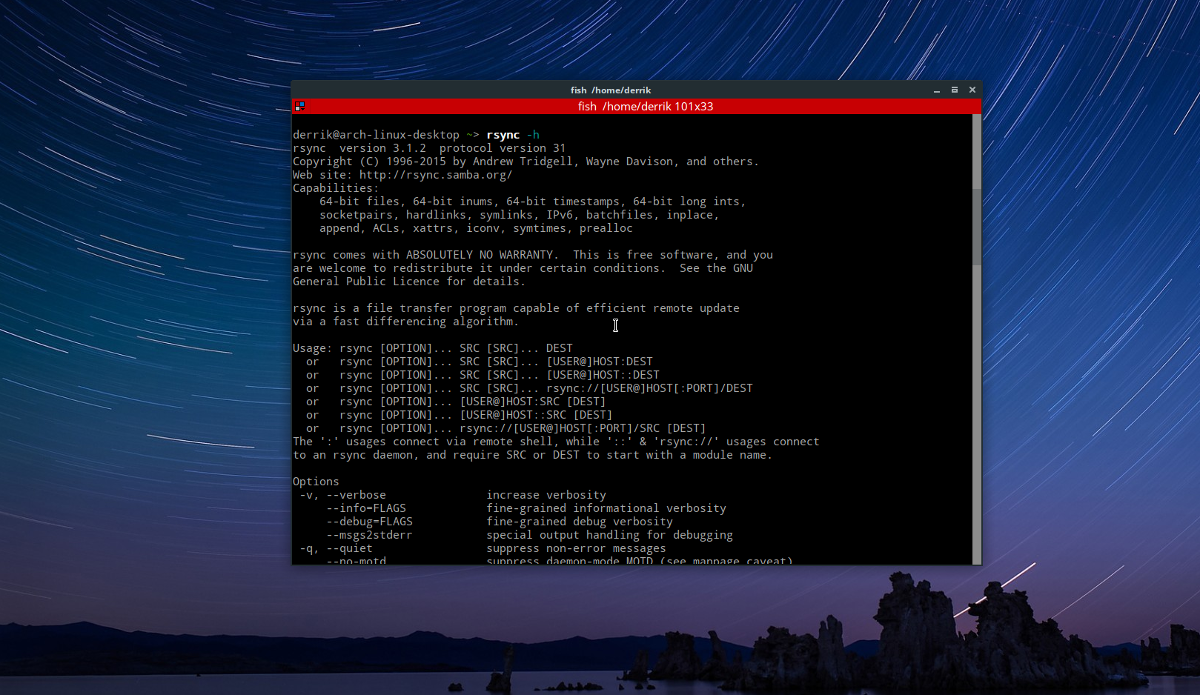Lately, everybody has a Sync app. There’s Bittorrent Sync (now Resilio Sync), Syncthing and and so on. Most of these instruments are gaining actual traction within the server and client area, and so they exist for one purpose. They assist customers arrange an area/web based mostly peer-to-peer syncing system. For probably the most half, these instruments are fairly helpful. That mentioned, they’ll usually take a bit to arrange on completely different platforms (particularly Linux). That’s why these trying to do a easy file sync between computer systems ought to as an alternative think about using Rsync on Linux. It’s easy option to successfully (and shortly) switch recordsdata over a community or the web.
Set up
On this tutorial, we’ll be specializing in two instruments: the Rsync command-line device, and the Grsync GUI wrapper. Right here’s how you can set up these applications in your Linux PC.
Be aware: you’ll additionally want to put in SSH.
Ubuntu
sudo apt set up rsync grsync
Debian
sudo apt-get set up rsync grsync
Arch Linux
sudo pacman -S rsync grsync
Fedora
sudo dnf set up rsync grsync
OpenSUSE
sudo dnf set up rsync grsync
Different Linuxes
Rsync has been round since 1996. It’s due to this, customers should have no challenge discovering and putting in the app to their Linux PC, irrespective of how obscure. Seek for “rsync” in your bundle supervisor and set up it to the system. Relating to the Grsync wrapper device, it’s a bit iffy. Some Linux distributions could have it of their repositories, and a few could not. To set up it, open a terminal window, and seek for “grsync”. Alternatively, download it from the website.
Utilizing Rsync In The Terminal
The Rsync terminal device may be very highly effective, and thus may be piped into quite a lot of completely different apps. That mentioned, most customers solely actually need to know the fundamentals. Right here’s the way it works. To switch the entire content material of 1 folder straight to a different, use this command:
Native to distant switch
rsync -r /residence/username/native/file/to/switch/. person@host:/path/to/vacation spot/folder
Distant to native switch
rsync -r person@host:/path/to/distant/. /residence/username/native/file/to/switch/
These instructions permit the person to straight, and recursively switch the entire recordsdata in a single folder to a different both domestically or remotely. In search of extra choices? Within the terminal, do: rsync -h and check out the numerous rsync switches and choices obtainable.

Be aware: The Rsync assist notes are fairly giant. Typically instances the terminal could minimize bits of it off (or on the very least customers are compelled to endlessly scroll by means of them). To make issues simpler, strive saving the assistance directions on to a textual content file for later. It may be performed with this command:
rsync -h >> rsync-help.txt
Utilizing The Grsync GUI device
For probably the most half, the Grsync device actually is one of the simplest ways to make use of Rsync. It’s because although the Rsync command itself is highly effective, it’s syntax is kind of complicated for these simply trying to do a easy file sync. Relating to terminal instructions, this isn’t normally the case, nonetheless guidelines are supposed to be damaged.
Launch Grsync in your PC, and open the file supervisor too. Contained in the file supervisor, discover the native folder location you want to switch. For those who’re receiving a switch as an alternative of sending one, discover (or create) a vacation spot folder.
After discovering the placement data, go to Grsync and begin with the supply setting. Click on “open”, and browse for the native folder you’re trying to switch. If the supply is distant, write: person@host:/path/to/distant/.
After getting into/looking for the supply of the switch, go to the following choice space. Click on open to discover a vacation spot folder (if the switch supply is distant), or enter: person@host:/path/from/distant/ should you’re transferring over the community.
The Grsync device has sane defaults, and doesn’t require any tinkering for the typical person. To begin the switch, click on the beginning button. When the switch begins, a loading display will seem. For those who’re curious as to how Rsync is working, click on the “rsync output” button. This may show an entire command output that the person can consult with.
Fast Grsync Tip
Unsure why your file sync isn’t working? Attempt utilizing simulation mode. It permits customers to tweak and arrange an Rsync, after which run a simulation. No precise recordsdata are transferred. As an alternative, they’re simulated and output is given. This may help Rsync newcomers tweak their switch setups, detect errors and and so on.
To entry simulation mode in Grsync, click on “File”, then click on “Simulation”. Alternatively, open the Grsync simulator device with the Ctrl + S keyboard shortcut.
Conclusion
Fashionable syncing functions have their use circumstances, that’s for positive. For those who’re trying to distribute a bunch of recordsdata to five or 6 PC’s on a LAN or over the web, Rsync isn’t for you. Nevertheless, if what you need is to shortly preserve a folder in sync between just a few Linux PC’s Rsync is the clear winner right here. There’s no have to mess with bar-codes, configure an online UI or log into an Android app. Simply enter a command or use the Grsync device and the switch begins.
